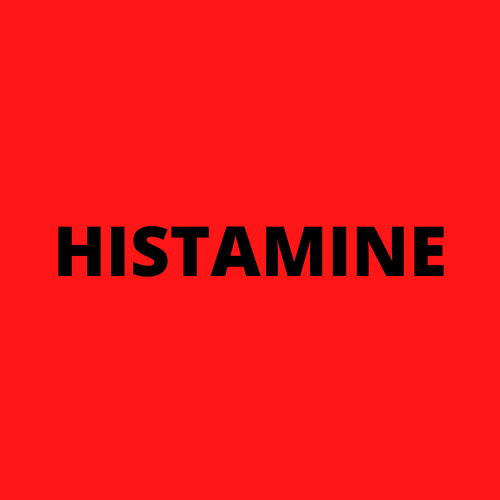TOMATO ALLERGY
Key Allergens
There are 7 allergens associated with tomato allergy - the main allergen in tomato is Sola l 4 which is similar in shape to the Bet v 1 allergens which can cause oral allergy type symptoms.
Three of the proteins found in tomato are Lipid Transfer Proteins, (LTPs). These proteins are panallergens with the potential to cause serious allergic reactions.
Sol l 1 is a profilin protein, these proteins are also panallergens and can cause problems across lots of groups of fruit and vegetables.
Tomatoes also contain a plant cyclophilin, which are multi functional proteins.
Food Intolerances





Tomato is a food high in histamine, so is not suitable for people following a low histamine diet.
Tomatoes which have been pickled or preserved, e.g. chutney, tomato puree and ketchup are also high in sulphites, fresh tomatoes contain minimal sulphites. Sulphites are inorganic salts used in preservations and have the potential to cause symptoms of food intolerance to those sensitive to sulphites, this food intolerance is more common in asthmatics. An improvement in symptoms can be made with a change to a low sulphite diet.
Tomatoes are a low FODMAP food. FODMAP stands for Fermentable oligosaccharides, disaccharides, monosaccharides and polyols. Foods high in FODMAPs can cause symptoms of food intolerance, affecting the gastro intestinal system and this can be mistaken for a true IgE food allergy.
Fresh tomatoes are low in salicylates, but being processed or canned increases the amount of salicylates in the product. So tomatoes have the potential to cause gastrointestinal food intolerance symptoms in people who are sensitive to salicylates.
Tomatoes are one of the few vegetables to contain a moderate amount of lectins, another cause of food intolerance. Cooking foods with lectins makes them more digestible and can reduce the symptoms of food intolerance.
You can read more about Food Intolerances on the dedicated Food Intolerance Page.
Associated Syndromes
Allergy to tomato is sometimes linked to Celery-Mugwort-Spice Syndrome as the sensitising allergen is a profilin protein called Art v 4, these proteins are also sometimes also called Bet v 2 proteins.
The lipid transfer proteins in tomato may cause problems if you suffer from LTP Syndrome.
To a lesser extent tomato allergy has been linked to Latex Food Syndrome, which is caused by the body confusing the proteins it encounters in food to that of the profilin proteins found in latex to which it is already sensitised.
Cross Reactivity
If sensitised to grass pollen you may also react to melon, potato, oranges and peanuts.
Common foods involved in LTP allergy include kiwi, strawberries, sunflower seeds, walnut, apple, mulberry, banana, pea, apricot, cherry, plum, almond, peach pomegranate, raspberry, tomato, grape, celery, peanut, asparagus, cabbage, broccoli, chestnut, lemon, tangerine, orange, hazelnut, lettuce, lentils, lupin, green bean, pear, mustard, wheat and maize.
Other foods containing plant profilins are kiwi, pineapple, celery, peanut, chilli, watermelon, orange, hazelnut, melon, strawberry, soya, barley, walnut, lychee, lupin, apple, banana, date, cherry, almond, peach, pear, mustard, carrot, aubergine and wheat.
The only other foods to contain cyclophilins are peanuts, but the protein has been acknowledged as an airway allergen in mould, birch tree pollen, dust mites, olive tree pollen and magic mushrooms.
Please note that the food lists are not exhaustive, the most up to date data is on the Cross Reactivity Tool.
Resources
Websites
Allergen Encyclopedia - Tomato
DermNet NZ - Pollen Food Allergy Syndrome
Tomato Allergy and related Symptoms
Allergy information for: Tomato (Lycopersicon esculentum)
Nightshade Allergy - Aubergine, Potatoes, Pepper & Tomatoes
ATP Science - Salicylate Foods
Articles and Journals
Food allergy outside the eight big foods in Europe: A systematic review and meta-analysis, 2024
Safety of yellow/orange tomato extract as a novel food pursuant to Regulation (EU) 2015/2283, 2023
Prevalence of tomato and cucumber sensitization among greenhouse workers, 2022
Prevalence of tomato and cucumber sensitization among greenhouse workers, 2021
Dietary Lectins: Gastrointestinal and Immune Effects, 2020
Cross-reactivity syndromes in food allergy, 2013
Tomato allergy: impact of genotype and environmental factors on the biological response, 2011
Allergenic activity of different tomato cultivars in tomato allergic subjects, 2011
Detection of Some Safe Plant-Derived Foods for LTP-Allergic Patients, 2007
Tomato allergy in children and young adults: cross‐reactivity with latex and potato, 2001
Latex allergy: clinical features and cross-reactivity with fruits, 1994
Class I chitinases as potential panallergens involved in the latex-fruit syndrome, 1999